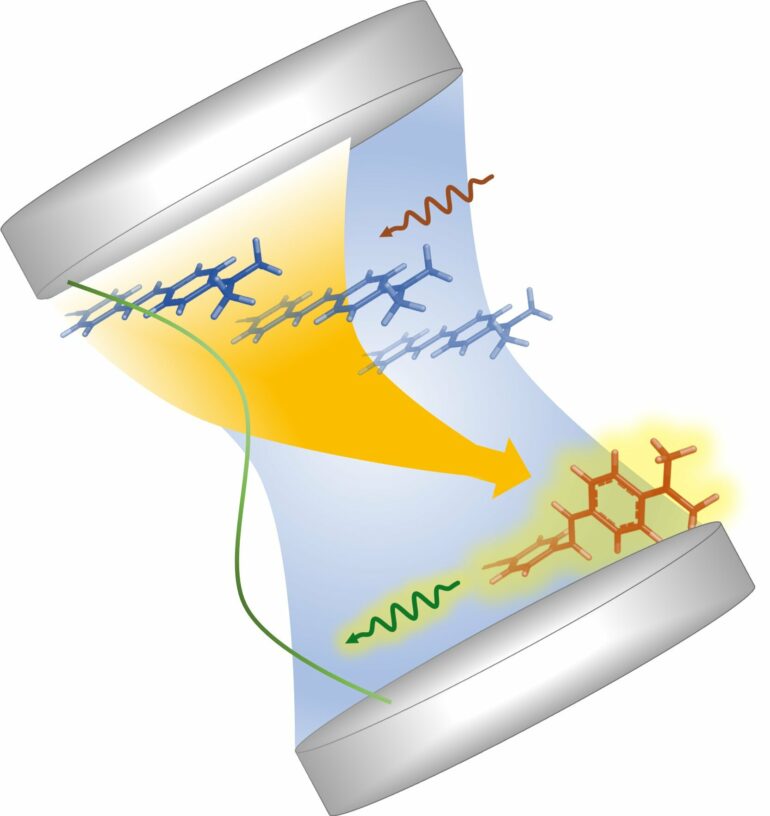In chemistry, molecules are manipulated by changing the constituent atoms, or their arrangements. Now a group of physicists and chemists from The City College of New York and Spain can demonstrate how the use of an optical cavity (where light is trapped) is also able to change the molecular property of photo-isomerization—a light activated process that modifies the optical response. Entitled “Selective isomer emission via funneling of exciton polaritons,” their study appears in Science Advances.
While the photophysical properties of isomers are of great significance in organic optoelectronics and many biochemical events, it is the correct choice and purity of the isomer luminescence that plays a decisive role in being favored or disfavored for a particular application. However, the inhomogeneous disorder in an organic molecular solid can almost completely suppress the photophysical properties of one isomer over the other, making it challenging to access in thin film state.
Enter The City College-Autonomous University of Madrid research group to address this problem. The CCNY researchers were led by physicist Vinod M. Menon and chemist George John, and the Spanish scientists by Francisco J. Garcia-Vidal and Johannes Feist.
Using the concept of strong light-matter coupling, the international team managed to create a funnel of hybrid light-matter states (polaritons) that can control the flow of excitation from a strongly emitting non-desirable planar isomer to a completely dark twisted isomer, which is of great potential significance in the field of organic optoelectronics.
The idea is put into practice an optical Fabry–Pérot cavity by strong coupling to derivatives of trans-stilbene, which present two isomers in different amounts. Thanks to the new relaxation pathway provided by the polaritons, the photoexcitation that is first shared by the common “polaritonic” mode is then selectively funneled to the excited states of one of the isomers, recognizing pure emission from the isomeric states that are otherwise dark under normal conditions.
“The strategy offers flexibility to significantly modify the emission wavelength of molecular isomers in thin films,” said Sitakanta Satapathy, a Post-Doctoral Fellow in Menon’s research group at CCNY and lead author of the study.
“Direct polariton energy harvesting offers promise to access desirable excited state confirmations of potential importance in the field of organic photovoltaics, optoelectronics and photobiological reactions. Furthermore, through judicious choice of molecules and smart cavity systems, this strategy can be translated to other excited state processes, such as Excited State Induced Proton Transfer (ESIPT), Electron Transfer and Photooxidation reactions without any light-induced damage,” added Satapathy.
Self-assembled optical cavities can reach a strong-coupling state that supports polariton formation
More information:
Sitakanta Satapathy et al, Selective isomer emission via funneling of exciton polaritons, Science Advances (2021). DOI: 10.1126/sciadv.abj0997
Provided by
The City University of New York
Citation:
Dark molecular isomers lit up using optical cavities (2021, November 12)
retrieved 15 November 2021
from https://phys.org/news/2021-11-dark-molecular-isomers-lit-optical.html
This document is subject to copyright. Apart from any fair dealing for the purpose of private study or research, no
part may be reproduced without the written permission. The content is provided for information purposes only.



